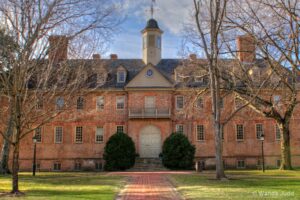
Coinciding with our discussions here on Bacon’s Rebellion about higher education, I just received the annual Washington Monthly issue with its college rankings.
The Monthly takes a significantly different approach to ranking colleges and universities than does the U.S. News and World Report. It identifies the aspects it feels are important in making a college or university “good.” After establishing those qualities, it uses quantitative measures to rank each school.
The three basic qualities, or functions, if you will, are: Social Mobility, Research, and Service. In its methodology, these qualities are weighted equally. To come up with its overall rankings, the magazine uses the following quantitative measures:
Social Mobility
- Graduation rate rank
- Grad rate performance rank
- Pell graduation gap rank
- Number of Pell graduates
- Pell performance rank
- First generation performance rank
- Earnings performance rank
- Net price rank
- Repayment rank
- Repayment rate performance rank
Research
- Research expenditure rank
- Bachelor’s to PhD rank
- Science and Engineering PhDs rank
- Faculty awards rank
- Faculty in National Academies rank
Service
- Peace Corps rank
- ROTC rank
- % of federal work-study funds spent on service
- Matches AmeriCorps service grants?
- Voting engagement points
Note that several of these measures address issues that have been raised in our BR discussions. These are the ones dealing with graduation rates, performance of first-generation college students, and earnings performance.
The results of this process are interesting and surprising. The usual institutions, Stanford, Harvard, MIT, etc., still come out on top, but some lesser-known colleges also show up in the top rankings. These include Utah State, Cedar Crest College (Pennsylvania), and Berea College (Kentucky).
So how do Virginia schools fare? Rather than lump everyone together, the magazine established groupings of like institutions. Here are the results:
National Universities Total: 395
35—Mary Baldwin
42—Va. Tech
51—GMU
52—UVa.
103—Regent University
109—William and Mary
129—ODU
187—VCU
361—Hampton University
371—Shenandoah University
387—Liberty University
(For National Universities, the full array of quantitative measures listed above are used. For the other groups, only “Research expenditures rank” and “Bachelor’s to PhD” rank are used to measure Research.)
Liberal Arts Colleges Total: 214
1—Washington and Lee
22—VMI
32—University of Richmond
75—UVa. at Wise
120—Randolph Macon College
127—Sweet Briar
161—Hollins University
165—Roanoke College
170—Virginia Wesleyan University
174—Randolph College (used to be Randolph-Macon Women’s College)
178—Bridgewater
181—Emory and Henry
194—Hampden-Sydney
201—Virginia Union
211—Southern Virginia University (I had never heard of this one. It is in Buena Vista and is aligned with the Mormon Church.)
Master’s Universities Total: 200
4—James Madison
32—Mary Washington
111—Radford
138—Longwood
181—Virginia State
Bachelor’s Colleges Total: 200
79—Bluefield College
80—Averett College
154—Ferrum College
I realize that this is a long post, but there is one more category that should interest BR readers. This is the “Best Bang for the Buck Colleges.” The Monthly defines these as those colleges that “do a good job promoting social mobility.” It picked 50 for each region. In the Southeast Region, Virginia fared pretty well:
2—Washington and Lee
6—Regent
8—James Madison
12—Mary Baldwin
18—George Mason
19—University of Richmond
22—Radford
28—UVa.
30—Va. Tech
33—UVa. at Wise
39—Mary Washington
44—VMI
45—William and Mary
49—Virginia State

Leave a Reply
You must be logged in to post a comment.